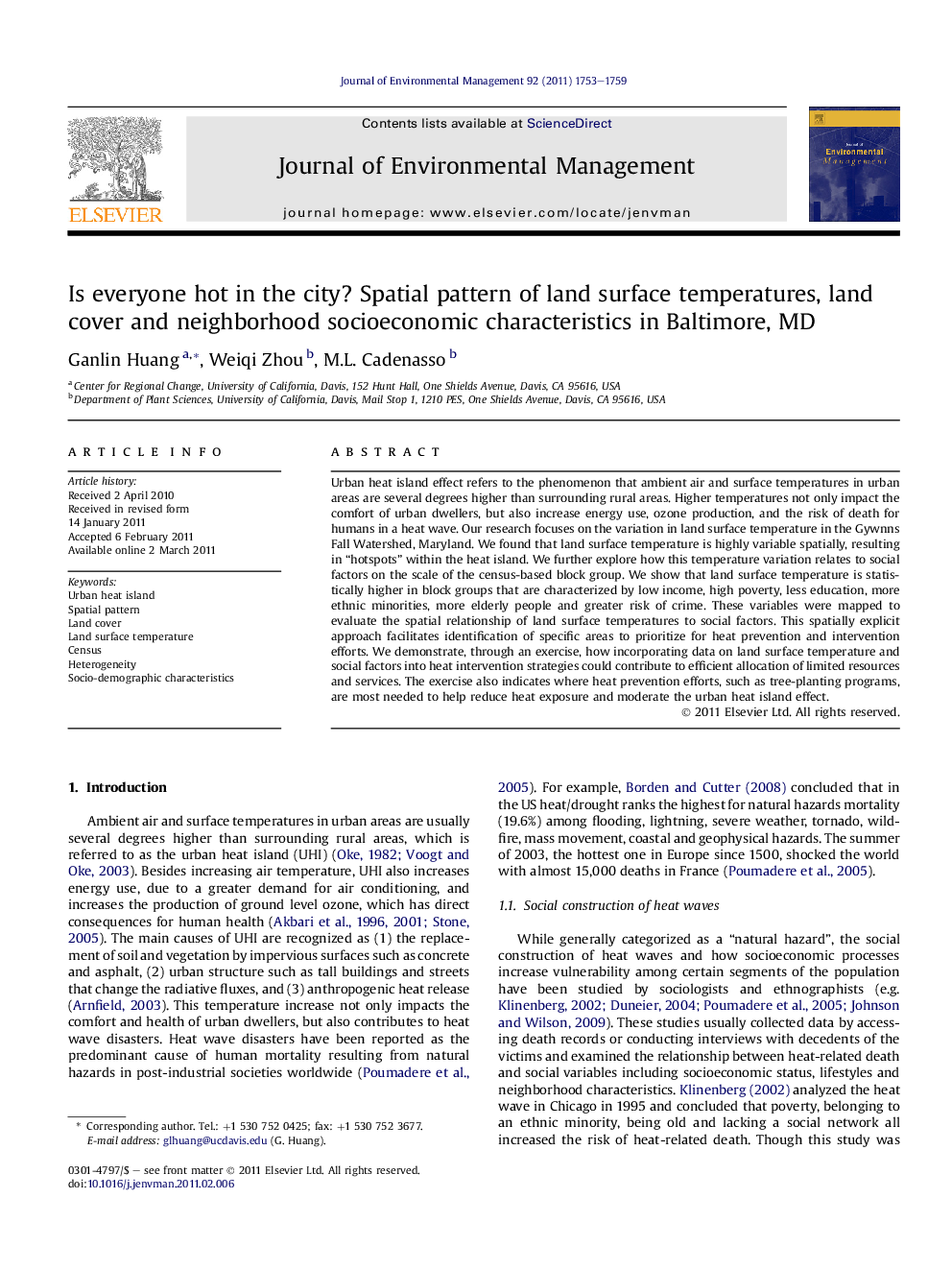| Article ID | Journal | Published Year | Pages | File Type |
|---|---|---|---|---|
| 1057157 | Journal of Environmental Management | 2011 | 7 Pages |
Urban heat island effect refers to the phenomenon that ambient air and surface temperatures in urban areas are several degrees higher than surrounding rural areas. Higher temperatures not only impact the comfort of urban dwellers, but also increase energy use, ozone production, and the risk of death for humans in a heat wave. Our research focuses on the variation in land surface temperature in the Gywnns Fall Watershed, Maryland. We found that land surface temperature is highly variable spatially, resulting in “hotspots” within the heat island. We further explore how this temperature variation relates to social factors on the scale of the census-based block group. We show that land surface temperature is statistically higher in block groups that are characterized by low income, high poverty, less education, more ethnic minorities, more elderly people and greater risk of crime. These variables were mapped to evaluate the spatial relationship of land surface temperatures to social factors. This spatially explicit approach facilitates identification of specific areas to prioritize for heat prevention and intervention efforts. We demonstrate, through an exercise, how incorporating data on land surface temperature and social factors into heat intervention strategies could contribute to efficient allocation of limited resources and services. The exercise also indicates where heat prevention efforts, such as tree-planting programs, are most needed to help reduce heat exposure and moderate the urban heat island effect.
